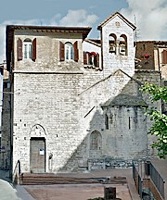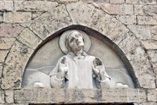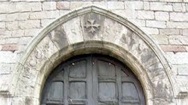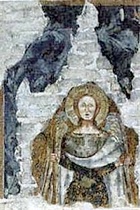


The church is first documented in the diploma (1163) of Emperor Frederick I. The apse and campanile belong to the original structure.
A second nave was added to the left of the original in the 14th century.
The original dedication was as Santo Stefano: San Valentino was added in 1819 when the parish of San Valentino was suppressed.
Portals


There are two entrances to the church:
-
✴there is an interesting relief [date ?] of the Pietà in the lunette above the entrance in the counter-facade; and
-
✴there is a cross in the keystone above the entrance in the left wall.
Interior
Fresco fragments (early 14th century)

Madonna and Child with saints (1535)
This detached fresco, which is attributed to Domenico Alfani [and dated by inscription ?], is on the wall at the end of the left nave. It is in the form of a fictive altarpiece, and depicts the Madonna and Child with SS Valentine, Nicholas of Bari, Antony of Padua and Vincent Ferrer. Its original location is unknown, although the presence of St Valentine suggests that it came from San Valentino. The attribution, although well-founded on stylistic grounds, was made only in 1921.

